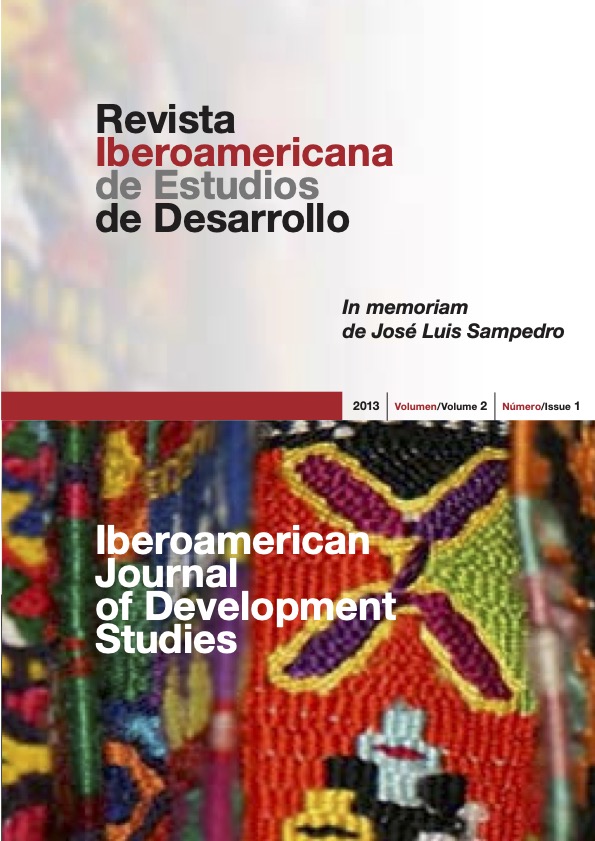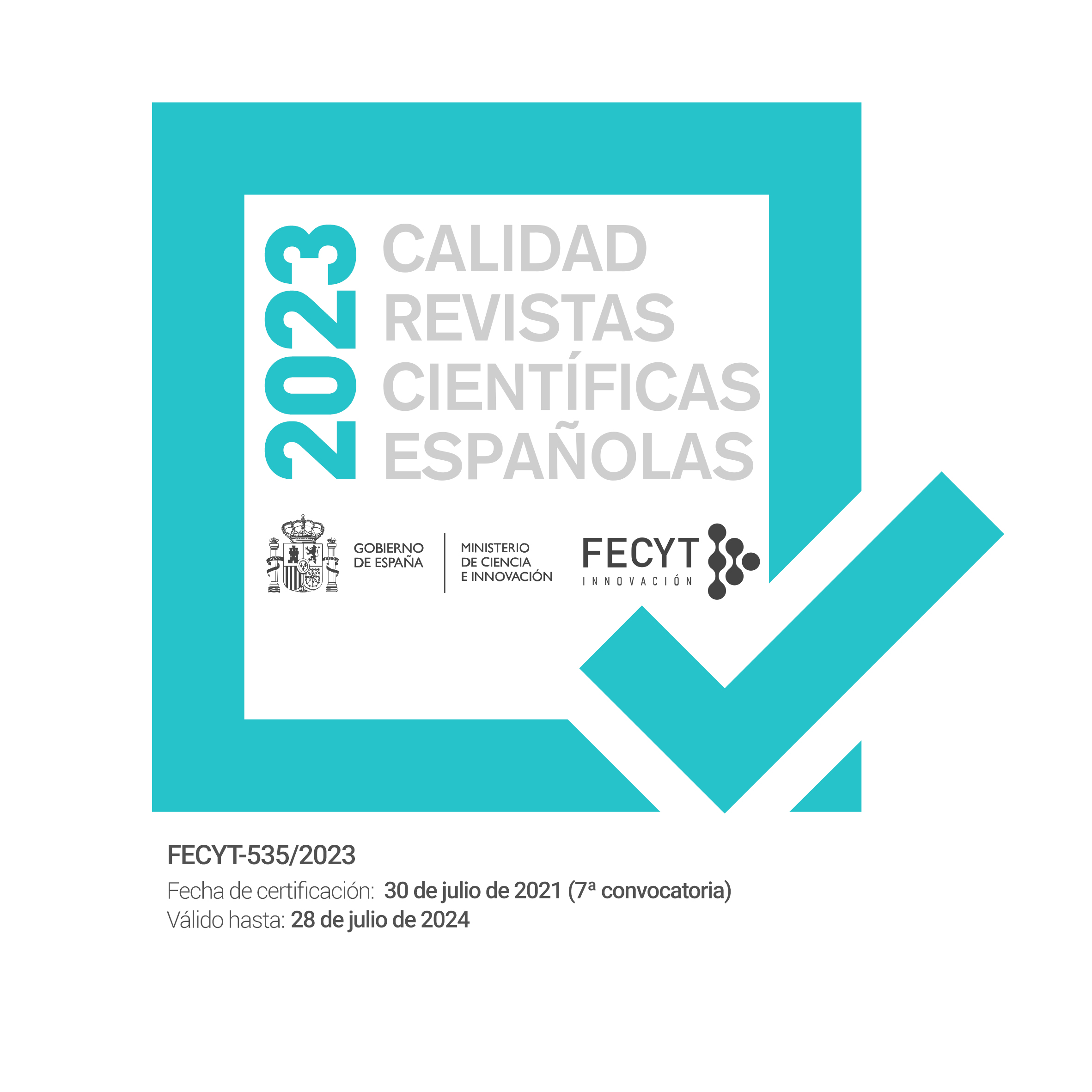Climate change impacts on maize and dry bean yields of smallholder farmers in Honduras
DOI:
https://doi.org/10.26754/ojs_ried/ijds.43Keywords:
Central America, Crop Simulation model, CropSyst, Food security, Subsistence, SubtropicalAbstract
The rotation maize and dry bean provides the main food supply of smallholder farmers in Honduras. Crop model assessment of climate change impacts (2070-2099 compared to a 1961-1990 baseline) on a maize-dry ben rotation for several sites across a range of climatic zones and elevations in Honduras. Low productivity systems, together with an uncertain future climate, pose a high level of risk for food security. The cropping systems simulation dynamic model CropSyst was calibrated and validated upon field trail site at Zamorano, then run with baseline and future climate scenarios based upon general circulation models (GCM) and the ClimGen synthetic daily weather generator. Results indicate large uncertainty in crop production from various GCM simulations and future emissions scenarios, but generally reduced yields at low elevations by 0% to 22% in suitable areas for crop production and increased yield at the cooler, on the hillsides, where farming needs to reduce soil erosion with conservation techniques. Further studies are needed to investigate strategies to reduce impacts and to explore adaptation tactics.
CITE AS:
Diaz-Ambrona, C., Gigena, R., Mendoza, C. (2013). Climate change impacts on maize and dry bean yields of smallholder farmers in Honduras. Iberoamerican Journal of Development Studies, 2 (1): 4-22
Downloads
References
AUHING JI (1989). Evaluation of different doses and times from application of nitrogen, and methods of positioning of phosphorus on the yield of the maize in Zamorano (Honduras). Escuela Agrícola Panamericana Zamorano, Tegucigalpa, Honduras (in Spanish, with abstract in English)
BARRETO HJ, HARTKAMP AD (1999). Analysis of Maize Production in Honduras: Linking Census Data to Environment Variables through Geographic Information Systems. NRG–GIS Series 99–02. Mexico DF, Mexico
BARROW E, HULME M, SEMENOV MA (1996). Effect of using different methods in the construction of climate change scenarios: examples from Europe. Climate Research 7:195–211
BATRES J (1988). Evaluation of the effect of dose of nitrogen using urea and ammonium sulphate on the yield of the maize in Zamorano. Escuela Agrícola Panamericana Zamorano, Tegucigalpa, Honduras (in Spanish, with abstract in English)
BELLOCCHI G, MAESTRINI C, FILA G, FONTANA F (2002). Assessment of the effects of climate change a case study in northern Italy. In: proceeding s of the VII ESA Congress, Cordoba, Spain
CASTELLVI F, STÖCKLE CO (2001). Comparing the performance of WGEN and ClimGen in the generation of temperature and solar radiation. Transactions of the ASAE 446:1683–1687
CASTRO RE (2003). Detailed characterization of soil in Zamorano. Escuela Agrícola Panamericana Zamorano, Tegucigalpa, Honduras (in Spanish, with abstract in English)
DÍAZ–AMBRONA CH, GIGENA R, MENDOZA CO (2004). Global Climate Change and Food Security for Small Farmers in Honduras. In: New directions for a diverse planet. Proceedings of the 4th International Crop Science Congress, Brisbane, Australia 941–942
DONATELLI M, TUBIELLO FN, PERUCH U, ROSENZWEIG C (2002). Impacts of climate change and elevated CO2 on sugar beet production in Northern and Central Italy. Italian Journal of Agronomy 6:133–142
FERNÁNDEZ JV (2003). Detailed characterization of soil in Zamorano for pasture management. Honduras. Escuela Agrícola Panamericana Zamorano, Tegucigalpa, Honduras (in Spanish, with abstract in English)
FAO (1995). Digital Soil Map of the World and Derived Soil Properties; Version 3.5. Landand Water Digital Media Series 1; Food and Agriculture Organization of the United Nations [FAO], Rome, Italy
FAO (2011). FAOSTAT: FAO Statistical Databases. Food and Agriculture Organization of the United Nations [FAO], Rome, Italy. http://www.fao.org, accessed 27 September 2011
FUENTES PA (1991). Determination of economic and technical optimal levels of density and fertilization within Hybrid Maize B–833 under the climatic conditions of the valley of Yeguare. Escuela Agrícola Panamericana Zamorano, Tegucigalpa, Honduras (in Spanish, with abstract in English)
GUEREÑA A, RUIZ–RAMOS M, DÍAZ–AMBRONA CH, CONDE JR, MÍNGUEZ MI (2001). Assessment of climate change and agriculture in Spain using climate models. Agronomy Journal 93:237–249
GUERRERO JH (1988). Study the yield potential of common bean (Phaseolus vulgaris L.) in Honduras. Escuela Agrícola Panamericana Zamorano, Tegucigalpa, Honduras (in Spanish, with abstract in English)
HARO MA (1998). Lime and nitrogen fertilization effect on yield and profit of common bean. Escuela Agrícola Panamericana Zamorano, Tegucigalpa, Honduras (in Spanish, with abstract in English)
HINTZE LH, RENKOWB M, SAIN G (2003). Variety characteristics and maize adoption in Honduras. Agricultural Economics 29:307–317
HULME M, WIGLEY TML, BARROW EM, RAPER SCB, CENTELLA A, SMITH S, CHIPANSHI A (2000). Using a climate scenario generator in vulnerability and adaptation assessments: MAGICC and SCENGEN Workbook. Climatic Research Unit, University of East Anglia, Norwich, UK
IGLESIAS A, ROSENZWEIG C, PEREIRA D (2000). Agricultural impacts of climate change in Spain: developing tools for a spatial analysis. Global Environmental Change– Human and Policy Dimensions 10:69–80
IPCC (2000). Emissions Scenarios. Prepared by N Nakicenovic and R Swart, Cambridge University Press, UK, 570. Available from Cambridge University Press, The Edinburgh Building Shaftesbury Road, Cambridge CB2 2RU, England http://www.ipcc.ch/ ipccreports/sres/emission accessed 22 October 2012
IPCC–TGCIA (1999). Guidelines on the Use of Scenario Data for Climate Impact and Adaptation Assessment. Version 1. Prepared by Carter; TR; M. Hulme; and M. Lal; Intergovernmental Panel on Climate Change; Task Group on Scenarios for Climate Impact Assessment, Bern, Switzerland
JANSEN HGP, PENDER J, DAMON A, SCHIPPER R (2006). Rural Development Policies and Sustainable Land Use in the Hillside Areas of Honduras: A Quantitative Livelihoods Approach. Research report 147, International Food Policy Research Institute, Washington, USA http://www.ifpri.org/sites/default/files/publications/ rr147.pdf accessed 22 October 2012
JONES PG, THORNTON PK (2000). MarkSim: Software to generate daily weather data for Latin America and Africa. Agronomy Journal 93:445–453
JONES PG, THORNTON PK (2003). The potential impacts of climate change on maize production in Africa and Latin America in 2055. Global Environmental Change 13:51–59
JOVANOVIC NZ, ANNANDALE JG, BENADE N, CAMPBELL GS 2003. CLIMGEN–UP: A user–friendly weather data generator. South African Journal of Plant and Soil 20:203–205
LOAGUE K, GREEN RE (1991). Statistical and graphical methods for evaluating solute transport models: overview and application. Journal of Contamination Hydrology 7:51–73
MEARNS LO, EASTERLING W, HAYS C (2001). Comparison of agricultural impacts of climate change calculated from high and low resolution climate model scenarios. Part I: The uncertainty due to spatial scale. Climate Change 51:131–172
MEARNS LO, GIORGI F, MCDANIEL L, SHIELDS C (2003). Climate scenarios for the southeast U.S. based on GCM and regional model simulations. Climate Change 60:7–35
MÍNGUEZ MI, RUIZ–RAMOS M, DÍAZ–AMBRONA CH, QUEMADA M, SAU F (2007). First– order impacts on winter and summer crops assessed with various high–resolution climate models in the Iberian Peninsula. Climate Change 81:343–355
MONTEITH JL (1977). Climate and crop efficiency of crop production in Britain. Philosophical Transactions of the Royal Society B 281:277–329
PARRY ML, ROSENZWEIG C, IGLESIAS A, FISCHER G, LIVERMORE M (1999). Climate change and world food security: A new assessment. Global Environmental Change 9:51–67
PARRY ML, ROSENZWEIG C, IGLESIAS A, FISCHER G, LIVERMORE M (2004). Effects of climate change on global food production under SRES emissions and socio– economic scenarios. Global Environmental Change 14:53–67
PAZ F, MATA JH (1999). Weather data from FHIA 1986–1998. Fundación Hondureña de Investigación Agrícola, La Lima, Honduras (in Spanish)
REILLY J (1996). Climate Change; global agriculture and regional vulberability, 237–266. In: Bazzaz F, Sombrock W. Eds. Global Climate Change and Agricultural Production. Wiley, Chichester, UK
ROBLETO EA (1988). Effect of the fertilization with calcium, phosphorus and molybdenum in the nitrogen fixation and yield common bean. Escuela Agrícola Panamericana Zamorano, Tegucigalpa, Honduras (in Spanish, with abstract in English)
RUBIO R (2002). The effect of nitrogen leaf fertilization on maize. Escuela Agrícola Panamericana Zamorano, Tegucigalpa, Honduras (in Spanish, with abstract in English)
RUIZ–RAMOS M, MÍNGUEZ M (2010). Evaluating uncertainty in climate change impacts on crop productivity in the Iberian Peninsula. Climate Research 44: 69–82
SCOTT MJ, VAIL LW, JAKSCH JA, STÖCKLE CO, KEMANIAN AR (2004). Water exchanges: tools to beat El Niño climate variability in irrigated agriculture. Journal of the American Water Management Association 40(1):15–31
SEMENOV MA, BROOKS RJ, BARROW EM, RICHARDSON CW (1998). Comparison of the WGEN and LARS–WG stochastic weather generators for diverse climates. Climate research 10:95–107
SRES (2000). Special Report on Emissions Scenarios: A special report of Working Group III of the Intergovernmental Panel on Climate Change, Cambridge University
STÖCKLE CO, NELSON R (2001). Cropping Systems Simulation Model User’s Manual. Biological Systems Engineering Department; Washington State University. http:// www.bsyse.wsu.edu/CS_Suite, accessed 27 September 2011
STÖCKLE CO, CAMPBELL GS, NELSON R (1999). ClimGen manual. Biological Systems Engineering Department; Washington State University, Pullman, WA, USA
STÖCKLE CO, DONATELLI M, NELSON R (2003). CropSyst; a cropping systems simulation model. European Journal of Agronomy 18:289–307
STÖCKLE CO, NELSON R, DONATELLI M, CASTELLVI F (2001). ClimGen: a flexible weather generation program. In: Donatelli M (ed.). Proceedings of the 2nd International Symposium Modelling Cropping Systems, European Society of Agronomy, Florence, Italy 34–41
TANNER CB, SINCLAIR TR (1983). Efficient water use in crop production: research or re–search? In: Taylor H, Jordan WR, Sinclair TR (eds.). Limitations to efficient water use in crop production. American Society for Agronomy, Madison, WI, USA 1–27
TUBIELLO FN, DONATELLI M, ROSENZWEIG C, STÖCKLE CO (2000). Effects of climate change and elevated CO2 on cropping systems: model predictions at two Italian locations. European Journal of Agronomy 13:179–189
VILLALOBOS F, ORGAZ F, TESTI L, FERERES E (1999). The use of synthetic weather data for strategy analysis in cropping system modelling. In: M. Donatelli (ed.). Proceedings of the International Symposium Modelling Cropping Systems. European Society for Agronomy, Lérida, Spain 269–270
VILLASECA I (2001). The effect of sowing density and nitrogen on maize yield in Zamora¬no (Honduras). Escuela Agrícola Panamericana Zamorano, Tegucigalpa, Honduras (in Spanish, with abstract in English)
WIGLEY TML (2003). MAGICC/SCENGEN 4.1: Technical Manual. UCAR–Climate and Global Dynamics Division, Boulder, Colorado. http://www.cgd.ucar.edu/cas/wigley/ magicc/index.html , accessed 27 September 2011
WIGLEY TML, SMITH SJ, PRATHER MJ (2002). Radiative forcing due to reactive gas emissions. Journal of Climate 15:2690–2696
Downloads
Published
How to Cite
Issue
Section
License
Copyright (c) 2013 Carlos G.H. Diaz-Ambrona, Ruben Gigena, Carlos Onan Mendoza

This work is licensed under a Creative Commons Attribution-NonCommercial-NoDerivatives 4.0 International License.








